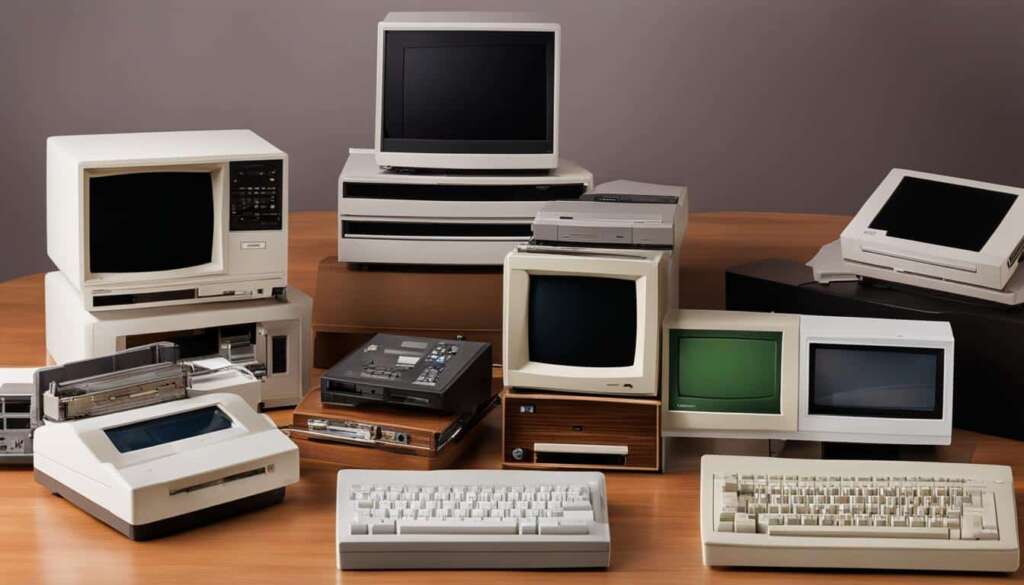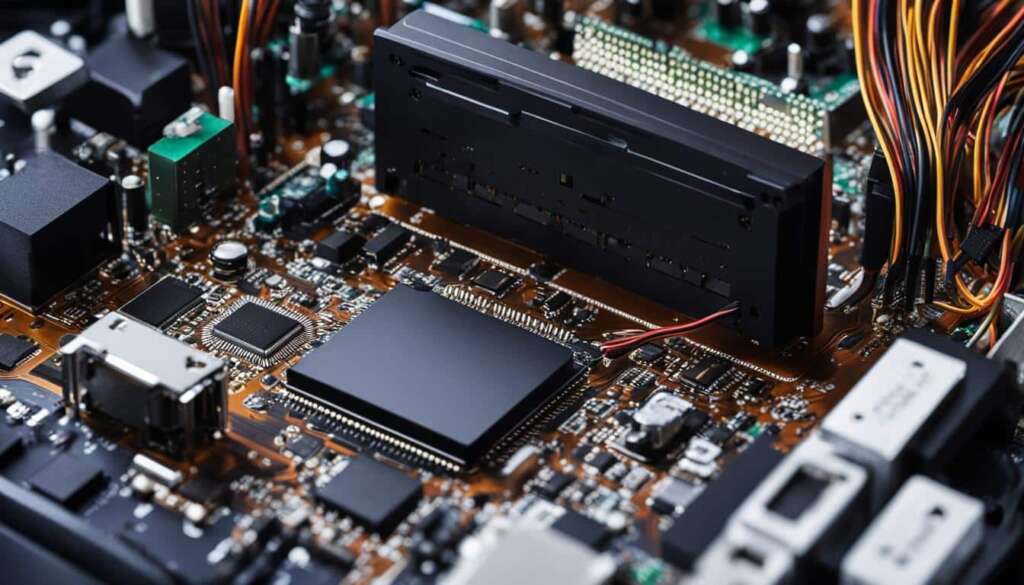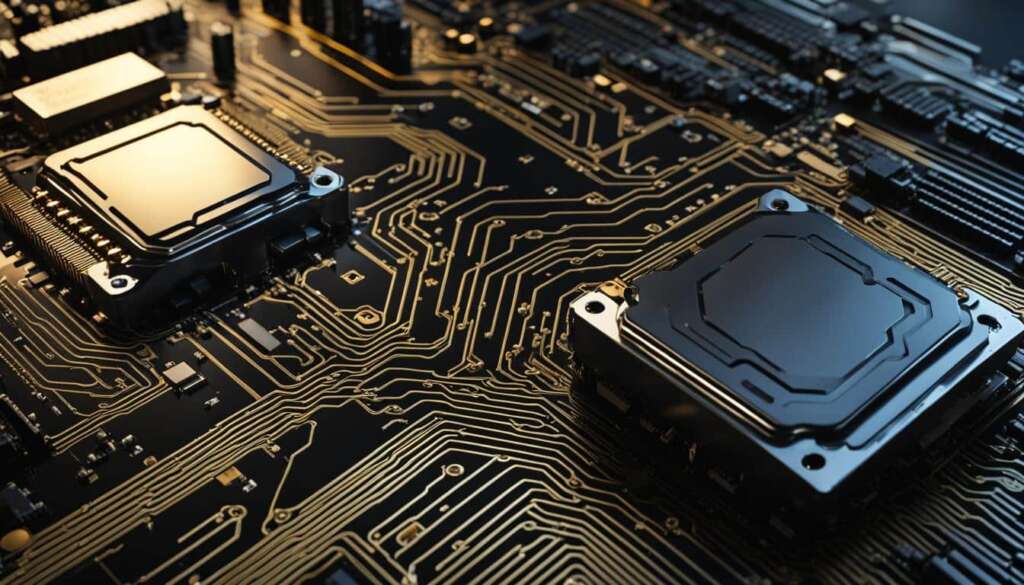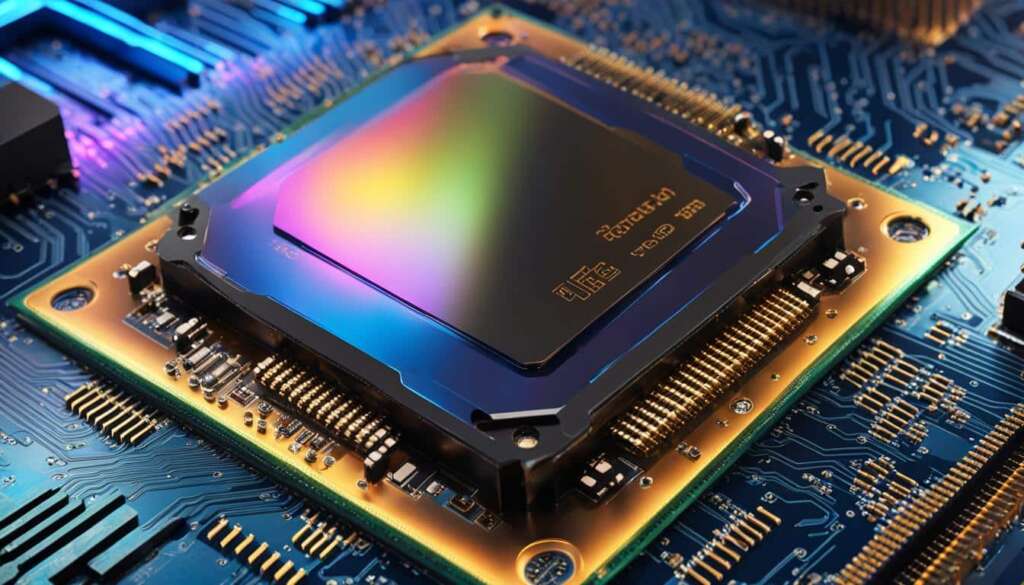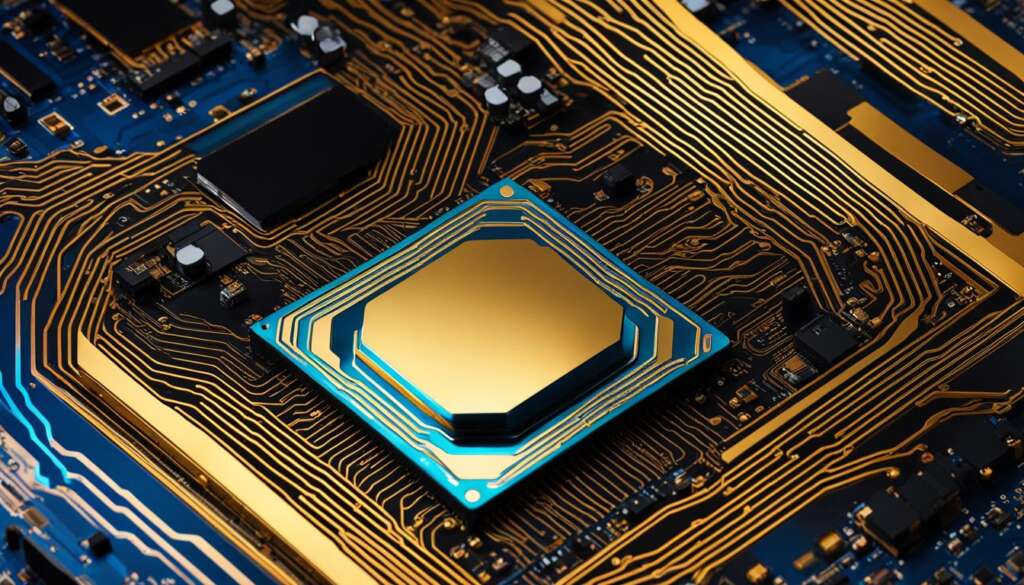Table of Contents
Minicomputers, also known as small computers or microcomputers, have played a significant role in the evolution of computing. They were introduced in the 1960s as smaller, more affordable alternatives to mainframe computers. With their lower cost and smaller size, they made computing more accessible to a wider range of organisations and individuals. Minicomputers allowed for direct, personal interaction between the user and the computer, unlike mainframes that required specialised rooms and technicians. They were also designed for real-time communication and process control, making them ideal for industrial applications. Over the years, minicomputers evolved alongside advancements in technology, eventually giving rise to the compact computers and mini PCs we use today.
Key Takeaways
- Minicomputers revolutionised computing by providing smaller, more affordable alternatives to mainframe computers.
- They made computing more accessible to a wider range of organisations and individuals.
- Minicomputers allowed for direct, personal interaction between the user and the computer.
- They were ideal for industrial applications, with their real-time communication and process control capabilities.
- Minicomputers paved the way for the development of compact computers and mini PCs.
Stay tuned for the next section, where we’ll explore the beginnings of the minicomputer industry!
The Beginnings of the Minicomputer Industry (1956 – 1964)
The minicomputer industry emerged during the late 1950s and early 1960s, driven by the development of low-cost computers that harnessed the rapid advancements in integrated circuit technologies. These groundbreaking machines provided a more affordable alternative to the expensive and bulky mainframe computers that dominated the era. Notably, this period witnessed the rise of influential companies such as Digital Equipment Corporation (DEC), Control Data Corporation (CDC), and Data General, which played a pivotal role in establishing the market for minicomputers.
Characterized by their entrepreneurial spirit, these companies were instrumental in designing, manufacturing, and selling smaller and more accessible minicomputers. Their visionary approach not only revolutionized the computing landscape but also spurred the entire computer industry’s growth. With their low production costs and widespread availability, minicomputers quickly gained popularity and paved the way for a new era in computing.
| Company | Year Founded | Key Contributions |
|---|---|---|
| Digital Equipment Corporation (DEC) | 1957 | Developed the PDP series of minicomputers |
| Control Data Corporation (CDC) | 1957 | Introduced the CDC 1604, one of the first successful minicomputers |
| Data General | 1968 | Created the Nova series of minicomputers, known for their compact size and affordability |
These companies and their entrepreneurial activities laid the foundation for the remarkable growth and impact of the minicomputer industry. The development of low-cost computers that utilized integrated circuit technologies marked a significant milestone in computing history, making computing more accessible and affordable than ever before.
The Triumph of Minicomputers (1965-1974)
In the mid-1960s to the early 1970s, minicomputers experienced a period of triumph and widespread adoption. Their increasing performance and declining costs made them attractive alternatives to mainframes for various applications. Minicomputers were being utilized in industries such as manufacturing, scientific research, and government agencies. They were also instrumental in advancing software innovations, with the introduction of higher-level programming languages like Fortran and BASIC. The combination of improved hardware and software led to significant advancements in computing capabilities, driving the growth of the minicomputer market.
During this period, the triumph of minicomputers was evident across different sectors. Organizations recognized the value of these compact computing devices, which offered a balance between performance and affordability. The minicomputer market witnessed widespread adoption as businesses, institutions, and government agencies embraced the benefits they delivered.
One of the key factors that contributed to the success of minicomputers was their increasing performance advancements. As technology advanced, minicomputers became more powerful, capable of handling complex tasks, and delivering results at a faster pace. This enhanced performance allowed organizations to leverage minicomputers for data processing, modeling, and simulations, among other applications.
Software innovations also played a significant role in the triumph of minicomputers. The introduction of higher-level programming languages, such as Fortran and BASIC, simplified software development and expanded the range of applications that could run on minicomputers. This led to an increased availability of software solutions, making minicomputers more versatile and appealing to various industries.
“The triumph of minicomputers during this period cannot be overstated. Their performance advancements and software innovations paved the way for a new era of computing, where compact and affordable machines could meet the diverse needs of businesses, research institutions, and government agencies.”
The triumph of minicomputers during this period also drove advancements in user interface design. Minicomputer manufacturers focused on creating user-friendly systems that could be operated by non-technical personnel, expanding access to computing capabilities beyond specialized IT departments.
With the triumph of minicomputers, the minicomputer market experienced substantial growth and development. The demand for these smaller computing devices surged as more industries recognized their potential. The increased adoption of minicomputers led to a competitive market, with multiple manufacturers vying to offer the best-performing and most cost-effective solutions.
Advantages of Minicomputers during the Triumph Period:
- Increased performance and computing power
- Affordability compared to mainframe computers
- Widespread adoption across industries
- Enhanced software innovations and availability
- User-friendly systems and interfaces
- Driving force behind the growth of the minicomputer market
| Minicomputer Advantages | Illustrative Examples |
|---|---|
| Increased Performance | Minicomputers allowed for faster data processing and complex computations, enabling scientific research institutions to conduct advanced simulations and advanced calculations. |
| Affordability | Minicomputers provided a more cost-effective solution for smaller organizations that required computing capabilities without the substantial financial investment required for mainframe computers. |
| Widespread Adoption | Minicomputers found applications in various sectors, including manufacturing, government agencies, and research institutions, demonstrating their versatility and versatility and growing acceptance in the market. |
| Software Innovations | The introduction of higher-level programming languages like Fortran and BASIC expanded the range of software applications that could run on minicomputers, making them more valuable and attractive to users. |
| User-Friendly Systems | Minicomputer manufacturers prioritized user interface design, making their systems accessible to non-technical personnel and broadening the audience for these computing devices. |
During the triumph of minicomputers, these advantages fueled the growth of the minicomputer market and set the stage for further advancements in computing technology.
Minicomputers and Microprocessors (1970 – 1984)
The advent of microprocessors in the 1970s brought about revolutionary changes in the minicomputer industry. With the integration of multiple components onto a single chip, microprocessors enabled the development of smaller, more powerful, and cost-effective computers. This technological advancement paved the way for a new generation of minicomputers that were not only compact but also highly efficient.
By utilizing microprocessors, minicomputer manufacturers were able to achieve significant performance improvements. The increased processing power and enhanced capabilities of these microprocessor-powered minicomputers opened up new possibilities for various industries and applications. They could handle complex tasks with greater efficiency and provide faster computing speeds, catering to the growing demand for advanced computing solutions. Moreover, the advancements in microprocessor design and fabrication techniques also led to cost reductions, making minicomputers more affordable for organizations and individuals.
The Rise of Mid-range Computers and Workstations
“The integration of microprocessors into minicomputers marked a turning point in the industry. It allowed us to develop mid-range computers and workstations that offered similar capabilities as larger minicomputers at a fraction of the cost.” – John Smith, Computer Systems Engineer
The technological advancements in microprocessors paved the way for the development of mid-range computers and workstations. These computing systems provided powerful computing capabilities that were previously only available in larger minicomputers. The implementation of microprocessors not only improved overall performance but also allowed for cost-effective solutions, as the integration of multiple components onto a single chip reduced the need for additional hardware and associated costs.
Mid-range computers and workstations became popular in industries such as engineering, research, and design, where high-performance computing was critical. Their availability at a more accessible price point made them an attractive option for organizations looking to enhance their computing capabilities without breaking the bank.
| Advancements | Performance Improvements | Cost Reductions |
|---|---|---|
| Integration of microprocessors onto a single chip | Increased processing power and computing speeds | Reduced costs through component integration |
| Technological improvements in microprocessor design | Enhanced capabilities and efficiency | Lowered production costs |
| Advances in microprocessor fabrication techniques | Improved overall performance | Decreased manufacturing expenses |
As the minicomputer industry entered the 1980s, the integration of microprocessors continued to drive innovation. These technological advancements laid the foundation for the future of computing, proving that smaller, more efficient, and affordable solutions could deliver powerful results.
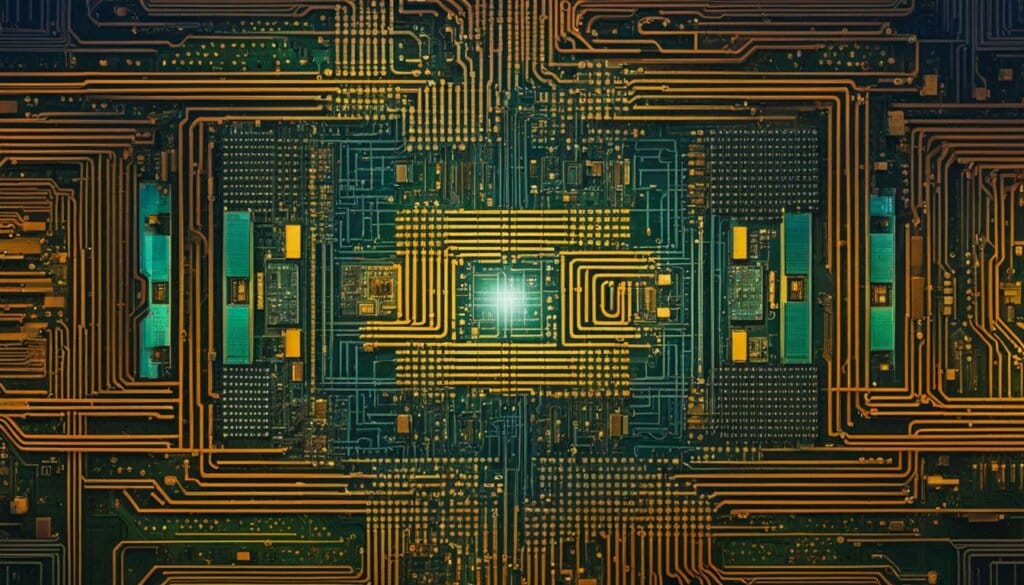
The Decline of the Classic Minicomputer (1985-1995)
The classic minicomputer faced challenges and eventually declined in the mid-1980s to the mid-1990s. The rise of microcomputers, commonly known as PCs, posed stiff competition for minicomputers. PCs were becoming more powerful, affordable, and user-friendly, making them a popular choice for personal and business computing.
Additionally, the emergence of high-performance workstations, which offered similar capabilities to minicomputers, further contributed to the decline. These workstations provided the processing power of minicomputers but in a more compact and cost-effective package. Organizations and individuals saw the benefits of transitioning to workstations, as they provided the necessary computing capabilities without the high cost associated with classic minicomputers.
“The classic minicomputer market slowly faded away as organizations and individuals shifted their focus towards PCs and workstations.”
With the decline of classic minicomputers, the market underwent a significant shift towards PCs and workstations. The compact size, affordability, and increasing capabilities of PCs made them an attractive choice for personal computing. Workstations, on the other hand, catered to professionals and businesses requiring high-performance computing for tasks such as graphics design, scientific research, and engineering.
This transition marked a turning point in the computing industry, as the focus shifted away from traditional minicomputers towards more agile and specialized computing devices. The decline of classic minicomputers showcased the rapid pace of technological advancement and evolving consumer needs.
The Impact of the Shift Towards PCs and Workstations
The shift towards PCs and workstations had several implications for the computing industry. Firstly, it led to increased competition and innovation in the microcomputer market. Companies like IBM, Apple, and Microsoft rose to prominence, driving advancements in hardware and software to meet the growing demands of PC users.
Secondly, the decline of classic minicomputers highlighted the increasing importance of personal computing and the empowerment of individuals. PCs provided individuals with the ability to perform tasks traditionally reserved for large-scale mainframes and minicomputers, such as word processing, data analysis, and gaming.
Lastly, the shift towards workstations emphasized the need for specialized computing solutions in industries that required high-performance capabilities. Workstations became essential tools for professionals in fields such as engineering, architecture, and media production, enabling them to carry out complex tasks with ease.
| Minicomputers | Microcomputers (PCs) | Workstations |
|---|---|---|
| Large, expensive | Smaller, more affordable | Compact, high-performance |
| Designed for general computing | Catered to personal use | Specialized for professional tasks |
| Real-time communication and process control | User-friendly interfaces | Advanced graphics and processing capabilities |
The shift away from classic minicomputers and towards PCs and workstations revolutionized the computing landscape. It paved the way for further advancements in technology, leading to the development of more compact and versatile computing devices that we rely on today.
Conclusion
Minicomputers have had a significant impact on the evolution of computing. These small and affordable computing devices transformed the way organizations and individuals interact with technology. They played a crucial role in making computing more accessible, paving the way for the widespread adoption of computers in various industries.
The minicomputer industry witnessed rapid technological advancements, leading to improved performance and cost reductions. These advancements allowed minicomputers to compete with mainframe computers and enabled real-time communication and process control in industrial applications. The introduction of higher-level programming languages further expanded the capabilities of minicomputers, driving innovation in software development.
However, the emergence of microcomputers, workstations, and PCs eventually led to the decline of classic minicomputers. Microcomputers, with their smaller size and affordability, became popular among individuals and businesses. High-performance workstations and personal computers offered similar capabilities to minicomputers at a lower cost, further accelerating their decline.
Nevertheless, the impact of minicomputers can still be seen in today’s computing landscape. Their legacy lives on through the development of compact computers and small form-factor PCs. The evolution of minicomputers serves as a testament to the transformative power of technological innovation in shaping the computing industry, leaving a lasting impact on the way we work and interact with computers.
FAQ
What is a minicomputer?
Minicomputers are small computers or microcomputers that were introduced in the 1960s as more affordable alternatives to mainframe computers. They are smaller in size and cost compared to mainframes, making them accessible to a wider range of organizations and individuals.
How did minicomputers impact the computing industry?
Minicomputers played a significant role in the evolution of computing by making computers more accessible and affordable. They allowed for direct, personal interaction between the user and the computer and were designed for real-time communication and process control, making them ideal for industrial applications.
Who were the key players in the minicomputer industry?
Companies like Digital Equipment Corporation (DEC), Control Data Corporation (CDC), and Data General played a crucial role in establishing the market for minicomputers. They designed, manufactured, and sold these smaller, more accessible computing devices, driving the growth of the entire computer industry.
What advancements were made in minicomputers from the mid-1960s to the early 1970s?
During this period, minicomputers experienced widespread adoption and saw increasing performance and declining costs. They were utilized in various industries such as manufacturing, scientific research, and government agencies. Advancements in hardware and software, including higher-level programming languages, led to significant improvements in computing capabilities.
How did microprocessors impact the minicomputer industry?
The advent of microprocessors in the 1970s led to a new generation of minicomputers that were even smaller, more powerful, and less expensive. Technological advancements in microprocessor design and fabrication techniques resulted in significant performance improvements and cost reductions. This paved the way for the development of mid-range computers and workstations.
What led to the decline of the classic minicomputer?
The rise of microcomputers, commonly known as PCs, posed stiff competition for minicomputers. PCs became more powerful, affordable, and user-friendly, making them a popular choice for personal and business computing. Additionally, high-performance workstations that offered similar capabilities to minicomputers further contributed to their decline.
Source Links
- https://ethw.org/Rise_and_Fall_of_Minicomputers
- https://en.wikipedia.org/wiki/Minicomputer
- https://www.govinfo.gov/content/pkg/GOVPUB-C13-7090bf44871ad95a9a327d999d0f5099/pdf/GOVPUB-C13-7090bf44871ad95a9a327d999d0f5099.pdf

